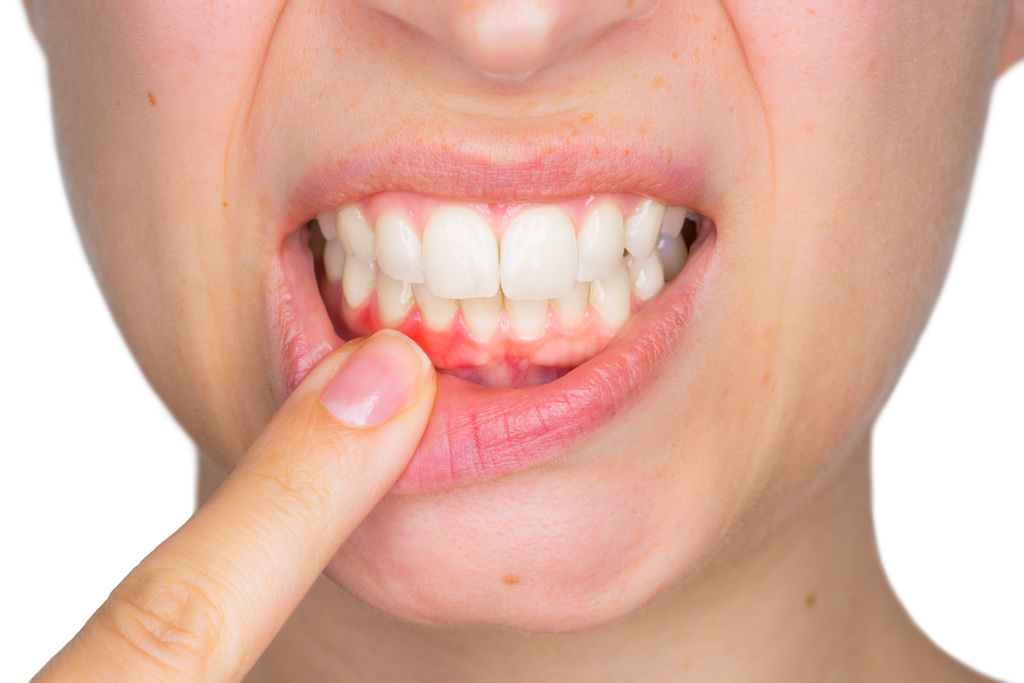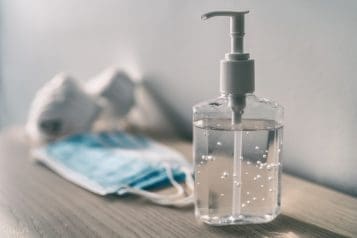 Photo Credit: Photo courtesy of Dr. Kalasho
Photo Credit: Photo courtesy of Dr. KalashoDr. Rhonda Kalasho is a graduate from the prestigious UCLA School of Dentistry, which has been ranked as the #1 Dental School in the US. She is a board-certified Dentist who is highly regarded for her aesthetic workmanship. She is also one of a handful of graduates who have received advanced residency training in full mouth reconstruction and hospital dentistry at the VA San Diego, and UCSD Health Care System. Dr. Kalasho has been ranked “Top Doc” in Orange County Magazine and holds a solid five-star rating on several platforms for her quality of practice, exceptional care, and skill. She is also a member of the American Academy of General Dentistry and the American Academy of Facial Aesthetics.
Ever notice that your gums bleed more, or tend to be more sensitive while you are ovulating, or on your period? Women’s sex hormones fluctuate, either during pregnancy, puberty, menopause, or even while taking oral contraceptives, the risk of gum disease is substantial. Periodontal disease is the increase in oral cavity flora leading to inflamed gums and loss of bone. Sex hormones have been scientifically shown to influence the pathogeneses of gum disease. If you have ever been pregnant almost 100% of the time, women will report bleeding, irritated, and inflamed gums, especially in their third trimester. It is certainly important to shed awareness of how sex hormones affect the periodontal health of women. As we age, we lose more bone especially around our teeth, and the hormonal fluctuations certainly do not help the circumstance.
There are such things as pregnancy gingivitis, or hormone-related gingivitis, which is a textbook term in the dental literature that essentially relates the fluctuations of hormones to gingivitis or periodontal disease. As hormones fluctuate, either during puberty, pregnancy, menopause, or menstruation, there could be more blood flow to the gums which causes them to be more sensitive and easily irritated. If left untreated women may notice unsolicited bleeding of the gums or gingiva that easily begin bleeding while simply brushing and flossing.
 Photo Credit: Shutterstock
Photo Credit: ShutterstockWomen taking birth control may also recognize a change to their gum appearance. Many may report that they are easily irritated, swollen, or look more red. If they are easily irritated than the gums will have an exaggerated response to plaque on the teeth. You have to maintain great oral care at home, and see your dentist regularly for checkups and cleanings to maintain oral health during the hormonal changes.
Unfortunately, changes to hormone levels are systemic, so during that time of the month, when our entire bodies feel a lot more sensitive, you want to brush and floss more. Although some may bleed so much that they feel discouraged to brush and floss during menstruation, but you certainly do not want to stop doing it. Remember, the gingiva during this time are easily irritated, so to cause insult to injury, leaving plaque on and between the teeth will salient the gingival inflammation. Simply brush, floss, or use a water flosser if you are too sensitive to floss, and visit your dentist for regular dental checkups. A helpful suggestion is to also keep a balanced diet low in starch, sugars, and carbohydrates so that the bacteria have nothing to thrive off and produce that bacterial filament. Antimicrobial or antigingivitic mouth rinses are exceptional for decreasing gum inflammation. Make sure the product you use does not have an alcohol base in its ingredients, and make sure it is well hydrating. Crest brand mouth rinses like GUM CARE by crest is a great mouth rinse to incorporate in your daily hygiene regimen.
Sex hormones like progesterone, and estrogen have been shown to have receptors in periodontal or gum tissue. Increase in progesterone which is seen during pregnancy in play an important role in bone formation which can place the patient at risk for periodontal disease which is defined by gum disease with the inclusion of bone loss. During pregnancy, the progesterone and estrogen levels are elevated and in the third trimester they are almost 10-30 times greater than while menstruating. It is not surprising that pregnancy is arguably seen in 100% of pregnancy cases.
Interesting to note is that during puberty subgingival flora emerges and the gums look more lobulated and red. That is why if you ever have seen a teenager, they have these really upset looking gums, that look ballooning. Teenagers must certainly see a dentist at least every 4-6 months and practice excellent care at home, as the hormones are playing against them, making them more susceptible to gum disease and the growth of bacterial filament or plaque production.
Even during menopause, as the hormonal levels are at a decline, women experience burning sensations in the mouth, dry mouth, which leads to menopausal gingivostomatitis, which ultimately increases the amount of plaque in the mouth leading to bone loss and gum disease.
Practicing good oral care at home, which includes not only brushing and floss, but also water flossing and visiting the dentist for simple cleanings is going to help you keep your gums looking healthy and strong. Maintaining oral care at home, and following up with your dentist even during pregnancy will keep your bone health in your jaws sustained as well.





















